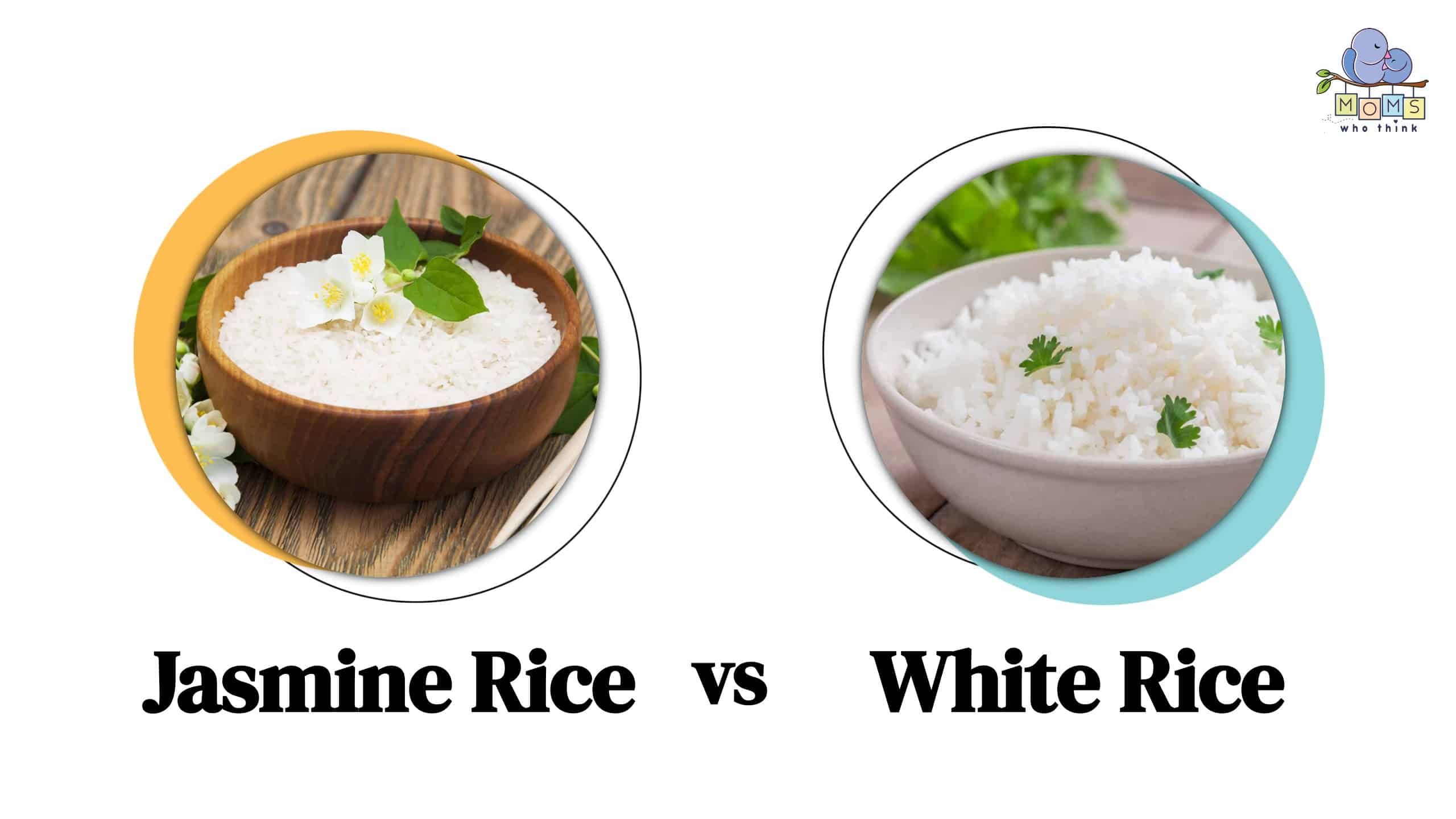If you feel like there are so many types of rice that you can't keep up with them, you are not alone. According to The Rice Association, there are more than 40,000 types of cultivated rice across the globe, that’s a lot of rice. But that really isn't too surprising because rice is one of the most consumed carbohydrates; it makes an appearance in every cuisine, from Southeast Asian to Italian to Cajun to Creole. The folks at Statista have the numbers to prove it, with 520 million metric tons of rice consumed throughout the world in 2021-2022. Now that is a lot of risotto, paella, sushi, stir fry, and Southern dirty rice.
White rice is probably the most popular rice. It comes in short-, medium-, and long-grain. It's a processed rice that has a fairly bland taste. The most common types of white rice are basmati, arborio, Valencia, sticky, and jasmine. Here, we are going to look specifically at jasmine rice vs. white long-grain rice. Jasmine rice falls under the general white rice umbrella term, but it is different; you might think of jasmine rice as the fancier, more aromatic cousin to boring basic white rice.
Jasmine Rice vs. White Rice Nutritional Differences
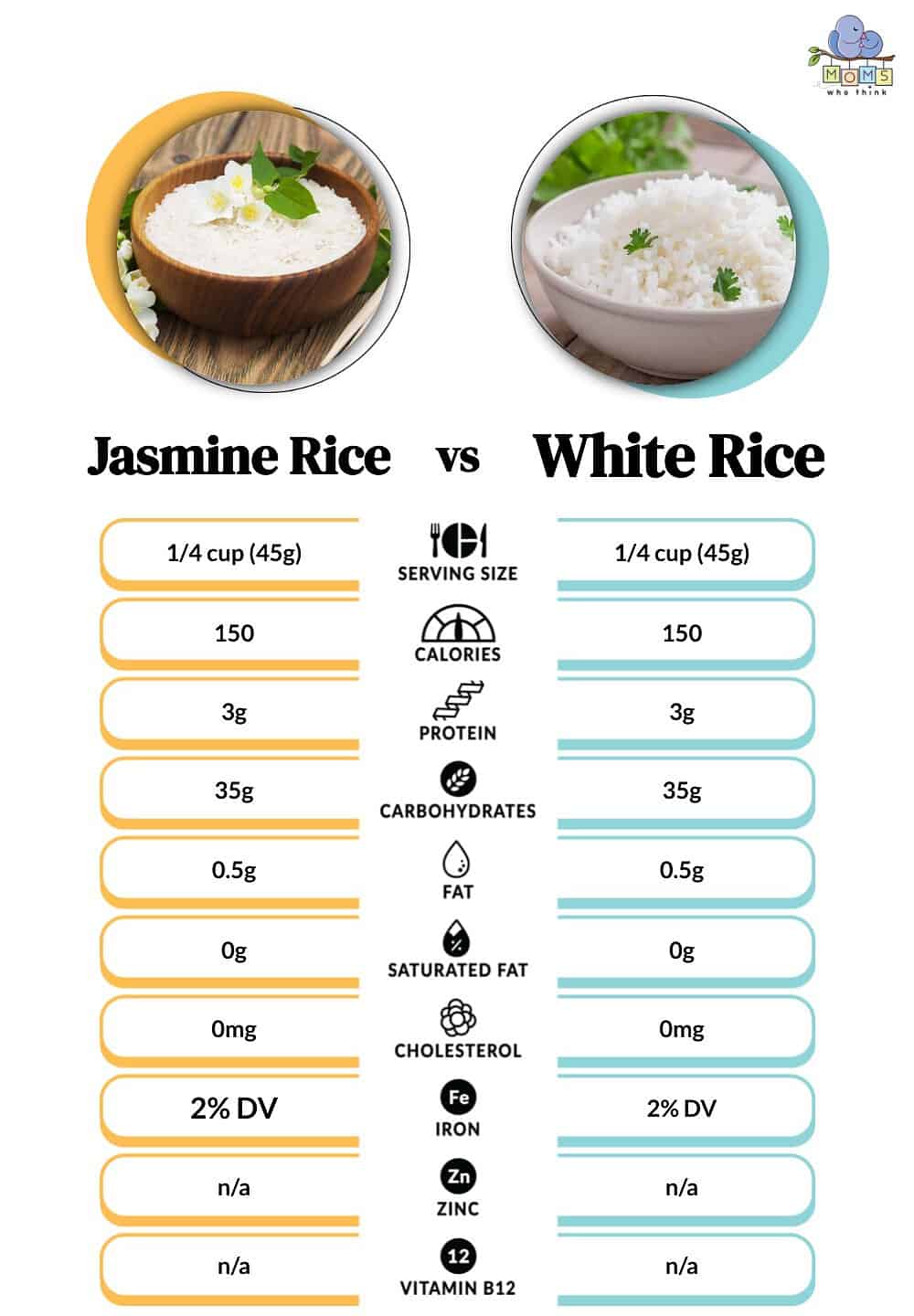
©
The nutritional differences between jasmine rice and white rice are minimal. The two rices both clock in at 150 calories per quarter cup, and both have three grams of protein per quarter cup serving. The same serving will get you 35 grams of carbohydrates and .05 grams of fat. These numbers mean that jasmine rice and white rice don't differ nutritionally, and it doesn't matter much which one you choose to put it on your plate or in your bowl.
The main difference between the two types of rice is actually in their texture. Long-grain white rice has a soft, almost dry texture where each individual grain is present. Meanwhile, aromatic jasmine rice has a fluffy texture where the individual pieces of rice kind of cling together rather than separate. So, the main reason to choose one of these types of rice over the other depends on the desired texture and how you plan on using it.
What is Jasmine Rice?
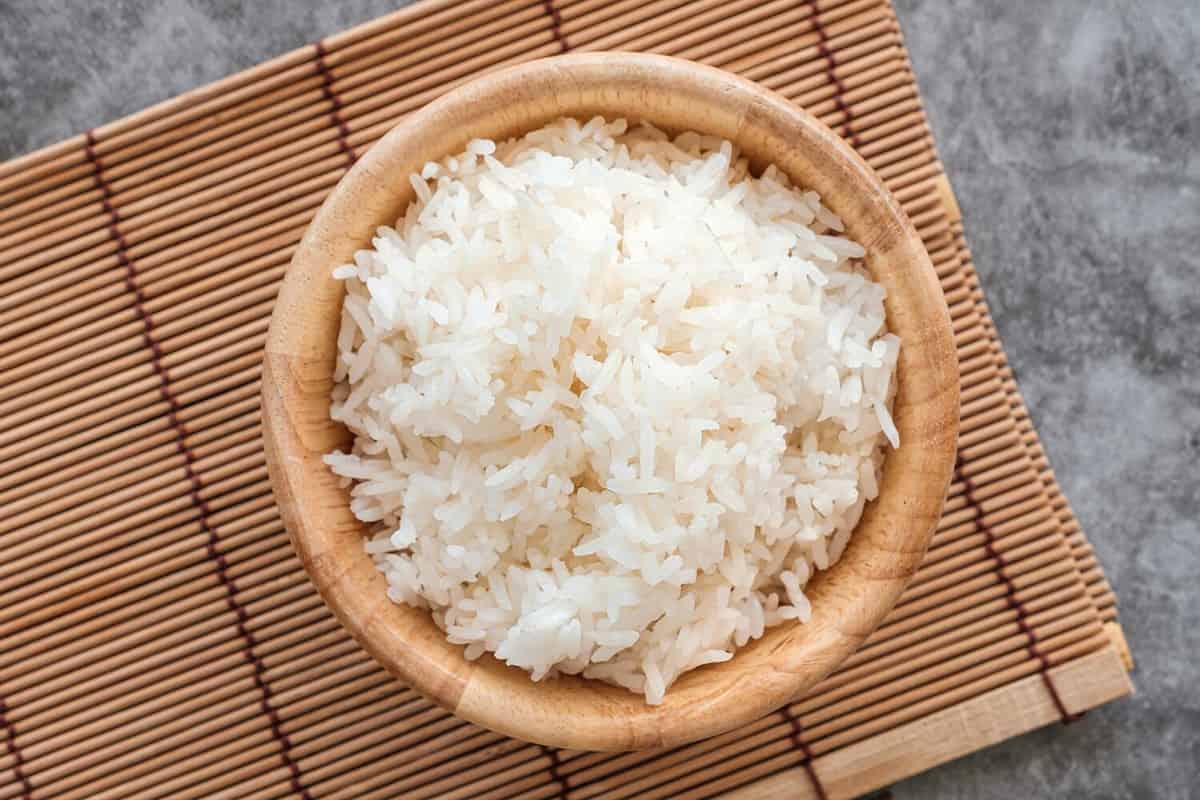
©poomsak suwannasilp/Shutterstock.com
Jasmine rice is a long-grain rice that can be white or brown. White jasmine rice is processed in the same way as white rice, with the germ, husk, and bran removed. Jasmine rice is a form of white rice but is distinct due to its fragrant floral smell. If you look at long-grain white rice and jasmine rice, it will be difficult to tell them apart based on appearance alone. But a quick whiff of jasmine will be all it takes to know which one is which. While uncooked jasmine and long-grain white rice look the same, when they are cooked, jasmine is easy to identify because it cooks up fluffier than long-grain white rice.
What is White Rice?
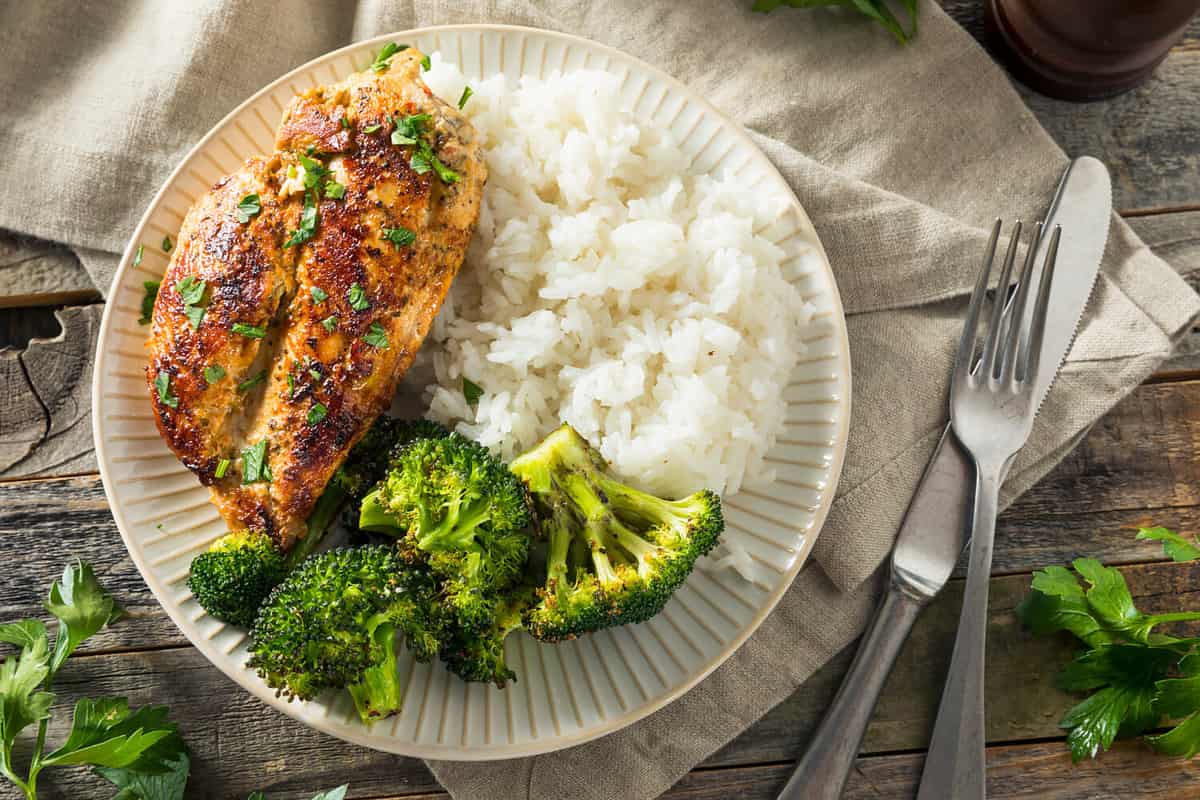
©Brent Hofacker/Shutterstock.com
White rice is the general term for processed rice. It comes in long- medium-, and short-grain. The different types of rice that fall under white rice are all used for specific purposes. Each type of white rice has a distinct makeup that affects its texture. Arborio rice is a short-grain starchy rice that is commonly used in risotto and soups because of its creamy texture. Basmati rice is a long grain rice that is dry, and the individual pieces of rice remain separate. It is popular in Indian cooking and is often paired with dahl and curries. Valencia rice is a short grain rice that is commonly used in the Spanish delicacy paella. Sticky rice is a long grain rice with a lot of gluten, making it sticky. It's a popular choice for rice-based desserts. Sushi rice is sticky, too, but it differs from sticky rice because it is short-grain rice. Long-grain white rice is a favorite in the American South and Tex-Mex dishes. And don’t forget about parboiled rice, which is more of a cooking style rather than an actual type of rice, but you have probably seen it on the supermarket shelves next to the other white rice. Parboiled rice is rice that has been partially cooked, making it a great choice for quick weeknight meals.
How to Cook Jasmine Rice
There are a few different ways to cook jasmine rice, and it really depends more on personal preference, tools in your kitchen, and the type of recipe. The three most common ways to cook rice are the stovetop, rice cooker, and InstaPot.
On the Stovetop
There are two ways to cook jasmine rice on the stovetop. Start with the right ratio, which is two cups of water to one cup of rice. Add the rice and the water to a saucepan and bring to a boil. When it starts boiling, turn it down to simmer and let cook for ten minutes. Then, turn it off and let it continue absorbing the liquid. After fifteen minutes, uncover and fluff with a fork. Fluffing rice just means using the fork to separate the pieces and break up any clumping spots.
The other way of cooking jasmine rice on the stove requires a saute pan or skillet rather than a saucepan. Start by toasting the rice in the saute and with some butter, oil, or ghee. Be careful not to burn it, and do not walk away. Stir the rice as it toasts, then add the water with the same ratio of two cups of water to one cup of rice and cover. Cook for ten minutes, then turn off the burner and let it finish cooking off the heat. After fifteen minutes, you have a nice pan of jasmine rice with a slightly toasted flavor. This method is especially good for making pilaf.
In the Rice Cooker
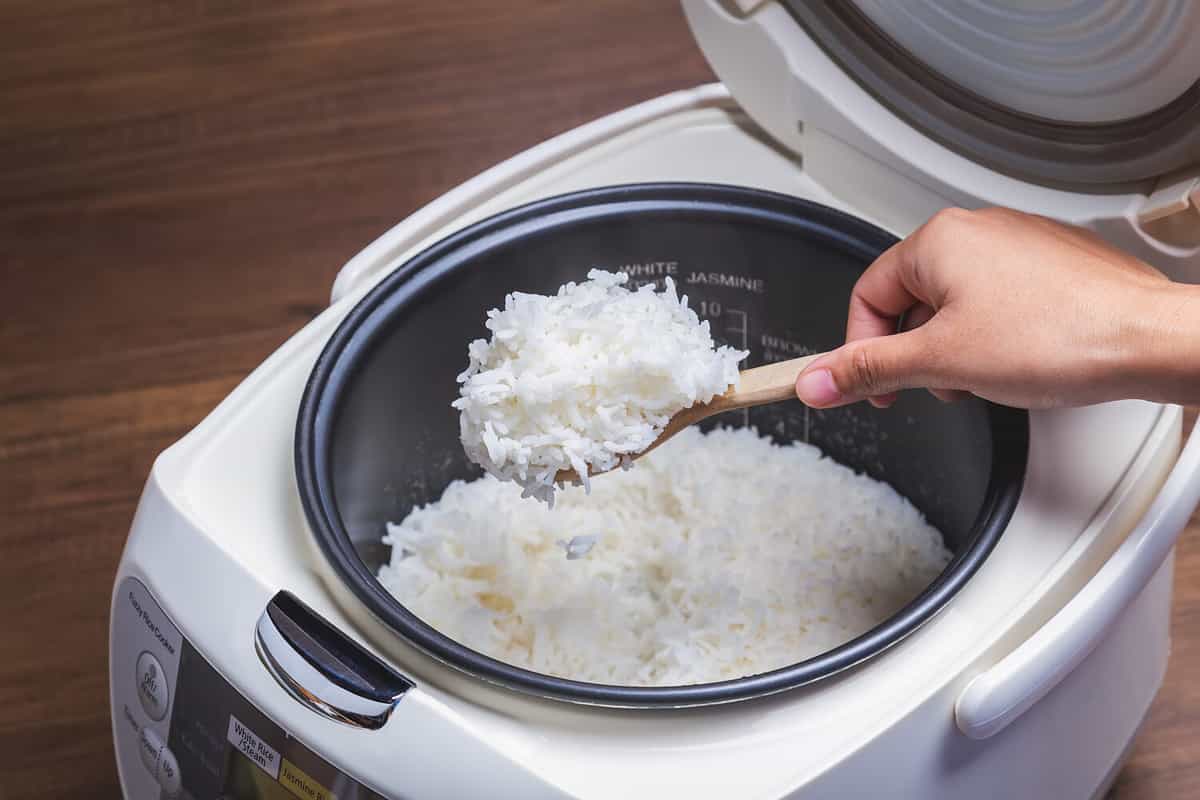
©KT Stock photos/Shutterstock.com
A rice cooker is one of the best ways to cook rice. There are a lot of different types of rice cookers available, and the prices range from twenty dollars to a few hundred dollars for state-of-the-art rice makers. If you make rice frequently, then it's a good investment and a worthy use of limited kitchen counter real estate. Each rice cooker is different; the fancier ones will have specific settings for the type of rice. Some types of rice, like wild and brown, take longer to cook than others. But the most basic rice cooker will just have one setting. All you have to do is add the ratio of two cups of water to one cup of rice and set it. When the timer goes off, let the rice rest for fifteen to twenty minutes, then fluff and serve.
In the InstaPot
An InstaPot is similar to a rice cooker, but it reaches a high temperature and has many other functions. Using an InstaPot to make rice is pretty similar to using a rice cooker. Just add in your rice and water and set on the rice function. Since an InstaPot is similar to a pressure cooker, it doesn't need much moisture, so the ratio changes to one cup of rice to one cup of water.
How to Cook White Rice
White rice is made in the same way as jasmine rice: on the stovetop, in the rice cooker, or in the InstaPot. Technically, you can make rice in the microwave, but it's not ideal. However, if you have a small space like a college dorm, there are plastic microwave rice cookers that can make making rice in the microwave much easier so that the rice will come out consistent each time.
Tips for Cooking Rice
- Don’t peek in the pot. Every time the lid is lifted, heat and moisture escape, and it will offset your cooking time.
- Always add salt to the water before adding the rice.
- Rinse the rice before cooking.
- Know your measurements: one cup of uncooked rice makes three cups of cooked rice.
Ways to Use Jasmine Rice
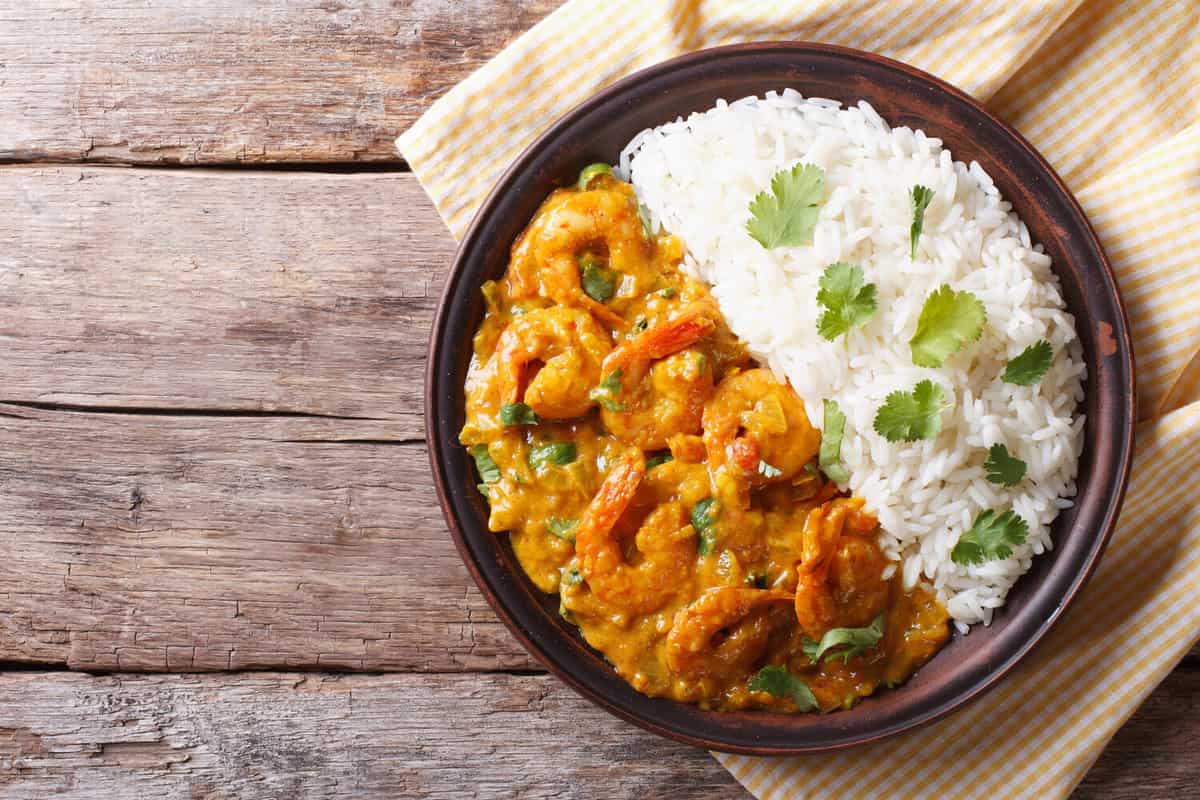
©AS Foodstudio/Shutterstock.com
Jasmine rice is excellent in Indian foods like biriyani and curry. It also pairs well with protein to make a full meal, like barbecue beef sausage, lemon chicken, and coconut shrimp. Or you can serve it as a side dish to accompany salmon, seafood, or vegetables. If you love hot and spicy foods, try pairing it with a spicy Thai curry or Mexican barbacoa.
Ways to Use White Rice
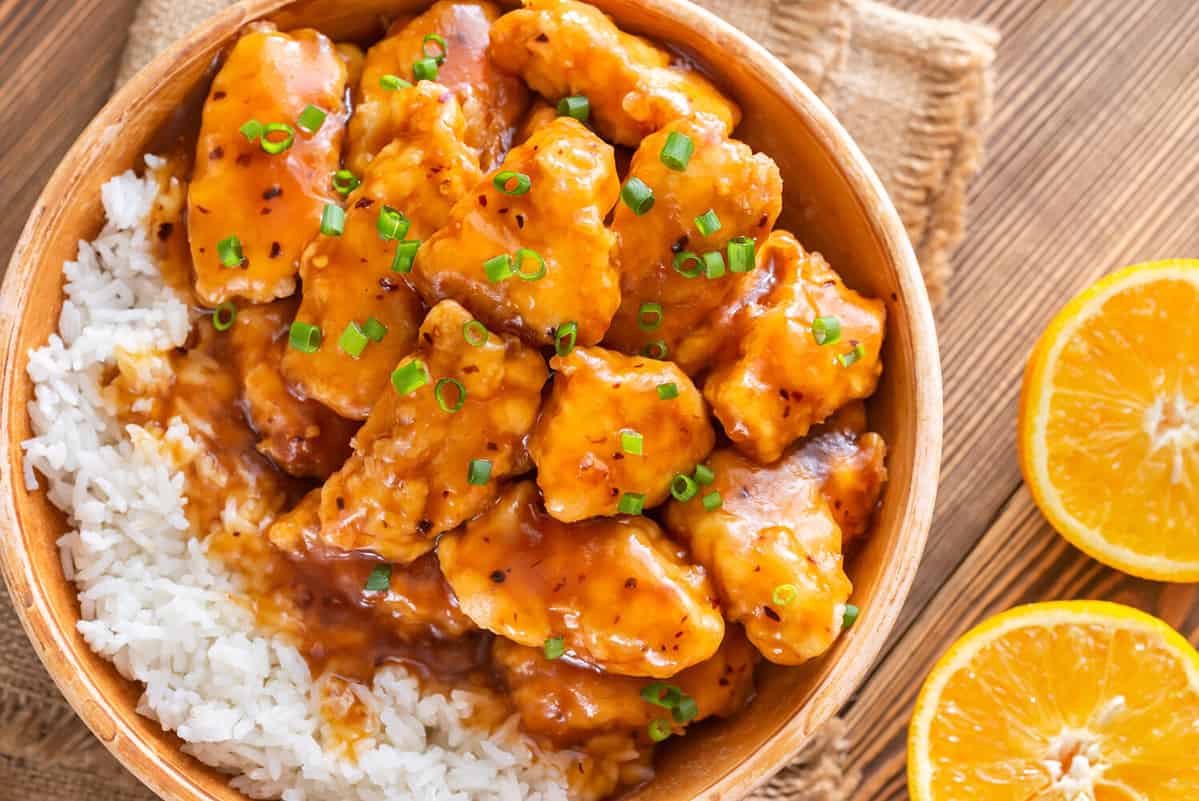
©Alexander Prokopenko/Shutterstock.com
When it comes to white rice, the possibilities are endless. It basically a blank canvas that can be savory or sweet. You can saute some veggies like broccoli and bok choy to make a vegetarian stir fry or add in animal protein for a chicken or beef stir fry. Or keep it simple with a simple savory rice dish. Leftover white rice can easily turn into homemade fried rice. Or you could try your hand at sweet rice dishes like rice pudding. There really isn’t much that white rice can't do.
